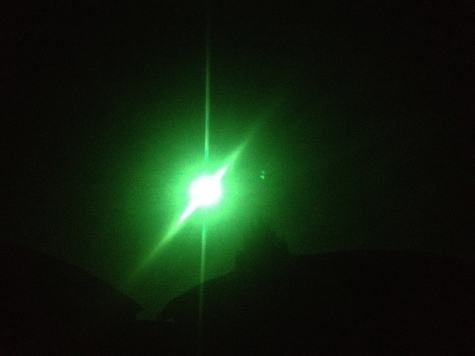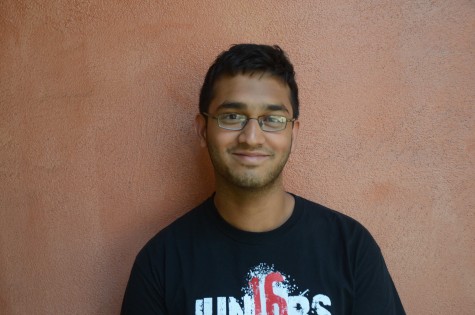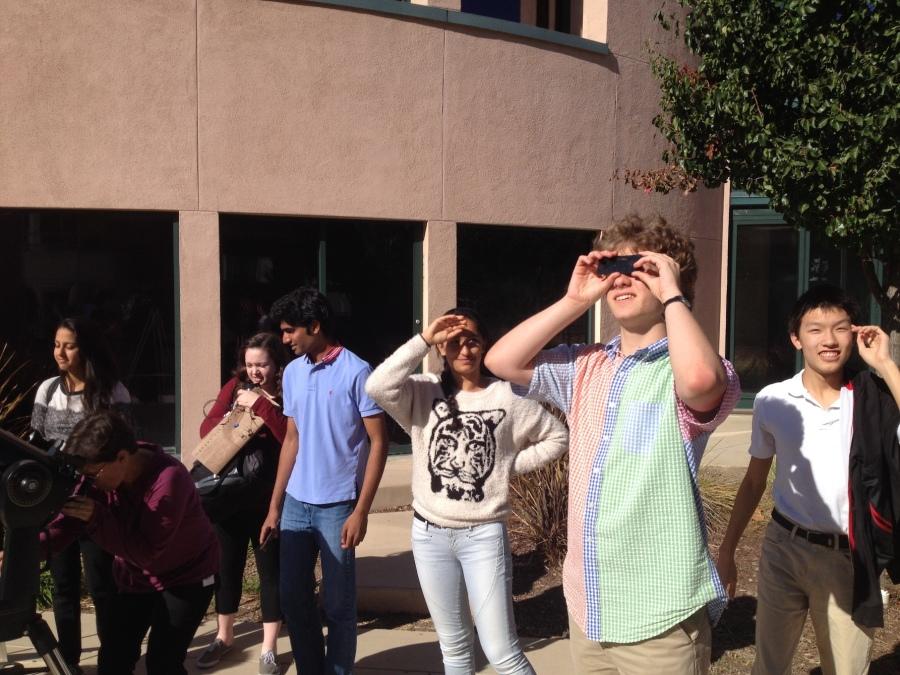Partial solar eclipse
Students at the Upper School were able to view a solar eclipse occurring during seventh and eight periods.
A partial solar eclipse occurred at 2:30 p.m, viewed by students and teachers using telescopes from the Astronomy classes during seventh and eighth periods.
Because it is dangerous to look directly at the sun without a protective filter, even during an eclipse, students used safe solar filters on the telescopes.

“I thought it was fascinating to see the huge sun spots [with the telescopes],” Rishabh Jain (12) said. “It was the first time I’ve seen one in person.”
Solar eclipses usually occur when the moon’s orbit propels it in between the sun and the Earth, hiding the sun’s rays from the surface of the Earth.
According to the National Aeronautics and Space Administration (NASA), in 2014 there have been two total lunar eclipses, one annual solar eclipse, and one partial solar eclipse.
NASA’s website stated that the eclipse lasted for two hours and gave people in the Central Time Zone (CT) the best view. People in Canada and the rest of the country were able to see a sliver of the sun, as the moon only partially obscured vision of the sun.
The eclipse was not viewable for citizens in New England and Hawaii.
For students at Harker, the solar eclipse’s effects were visible both by directly looking at the sun with a telescope and by the changing brightness of the sky.
“I’ve seen a few solar eclipses in the past. It was cool seeing how the whole school got much darker and you could see a sunspot on the surface,” Naman Jindal (11) said.
The next eclipse will occur next year on Mar. 20, and will be visible in Europe, North Africa, Northern Asia.

Vineet Kosaraju (12) is the STEM Editor for both Harker Aquila and Winged Post. He is a senior and has been part of the journalism program for the past...


















![“[Building nerf blasters] became this outlet of creativity for me that hasn't been matched by anything else. The process [of] making a build complete to your desire is such a painstakingly difficult process, but I've had to learn from [the skills needed from] soldering to proper painting. There's so many different options for everything, if you think about it, it exists. The best part is [that] if it doesn't exist, you can build it yourself," Ishaan Parate said.](https://harkeraquila.com/wp-content/uploads/2022/08/DSC_8149-900x604.jpg)




![“When I came into high school, I was ready to be a follower. But DECA was a game changer for me. It helped me overcome my fear of public speaking, and it's played such a major role in who I've become today. To be able to successfully lead a chapter of 150 students, an officer team and be one of the upperclassmen I once really admired is something I'm [really] proud of,” Anvitha Tummala ('21) said.](https://harkeraquila.com/wp-content/uploads/2021/07/Screen-Shot-2021-07-25-at-9.50.05-AM-900x594.png)







![“I think getting up in the morning and having a sense of purpose [is exciting]. I think without a certain amount of drive, life is kind of obsolete and mundane, and I think having that every single day is what makes each day unique and kind of makes life exciting,” Neymika Jain (12) said.](https://harkeraquila.com/wp-content/uploads/2017/06/Screen-Shot-2017-06-03-at-4.54.16-PM.png)








![“My slogan is ‘slow feet, don’t eat, and I’m hungry.’ You need to run fast to get where you are–you aren't going to get those championships if you aren't fast,” Angel Cervantes (12) said. “I want to do well in school on my tests and in track and win championships for my team. I live by that, [and] I can do that anywhere: in the classroom or on the field.”](https://harkeraquila.com/wp-content/uploads/2018/06/DSC5146-900x601.jpg)
![“[Volleyball has] taught me how to fall correctly, and another thing it taught is that you don’t have to be the best at something to be good at it. If you just hit the ball in a smart way, then it still scores points and you’re good at it. You could be a background player and still make a much bigger impact on the team than you would think,” Anya Gert (’20) said.](https://harkeraquila.com/wp-content/uploads/2020/06/AnnaGert_JinTuan_HoHPhotoEdited-600x900.jpeg)

![“I'm not nearly there yet, but [my confidence has] definitely been getting better since I was pretty shy and timid coming into Harker my freshman year. I know that there's a lot of people that are really confident in what they do, and I really admire them. Everyone's so driven and that has really pushed me to kind of try to find my own place in high school and be more confident,” Alyssa Huang (’20) said.](https://harkeraquila.com/wp-content/uploads/2020/06/AlyssaHuang_EmilyChen_HoHPhoto-900x749.jpeg)




